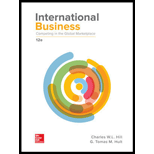
Case summary:
This case tells the way Company D extended its business internationally and the company has taken many steps to ensure success in many countries. It started its business in the small City M, but now in almost all the countries they have their business. For the growth of it business, they depend on global expansion.
The company has 5000 stores around the world since 2010 and located in 10,000 places around the world. 8,000 stores are operating outside Country U. This company finds out the new and easy way to place the orders and deliver the services to its customers. They offer different types of toppings to satisfy their customers.
Traditional toppings such as mushrooms and pepperonis are famous in Country U and in other countries upscale toppings are more popular. In Country J, people demand for snow crabs as toppings Company D made few changes in its marketing strategy to connect with its customers in a better way. The company with huge experience, will not always be the 1st company to enter the foreign markets. The company will make
Characters in case:
Company D.
City M.
Country U
Country J
To determine: The way Country J differs from the marketing mix of Country U and the way marketing mix differs in Country I.
Introduction:
The interchange of goods and services between many countries for business purpose is known as international business.
Want to see the full answer?
Check out a sample textbook solution
Chapter IC Solutions
International Business: Competing in the Global Marketplace
- I am looking for the correct answer to this financial accounting problem using valid accounting standards.arrow_forwardBeachside Hotel has sales of $1,250,000 and a profit margin of 10%. The annual depreciation expense is $135,000. What is the amount of the operating cash flow if the company has no long-term debt?arrow_forwardBrightMark's total equity isarrow_forward
- No AI What does the price-to-earnings (P/E) ratio measure?A. Company’s dividend yieldB. Value of assets per shareC. Market price relative to earnings per shareD. Return on equityarrow_forwardHelp with accountingarrow_forwardLuke Production applies overhead using a normal costing approach based on direct labor-hours. The budgeted factory overhead was $420,000, and the budgeted direct labor-hours were 28,000. The actual factory overhead was $438,900, and the actual direct labor-hours were 29,200. How much overhead would be applied to production?arrow_forward
- The Frontier Manufacturing had 7,200 actual direct labor hours at an actual rate of $18.75 per hour. Original production had been budgeted for 950 units, but only 900 units were actually produced. Labor standards were 9.2 hours per completed unit at a standard rate of $17.50 per hour. Compute the direct labor cost variance.arrow_forwardI need help finding the accurate solution to this general accounting problem with valid methods.arrow_forwardI am searching for the correct answer to this general accounting problem with proper accounting rules.arrow_forward
 Foundations of Business (MindTap Course List)MarketingISBN:9781337386920Author:William M. Pride, Robert J. Hughes, Jack R. KapoorPublisher:Cengage Learning
Foundations of Business (MindTap Course List)MarketingISBN:9781337386920Author:William M. Pride, Robert J. Hughes, Jack R. KapoorPublisher:Cengage Learning Foundations of Business - Standalone book (MindTa...MarketingISBN:9781285193946Author:William M. Pride, Robert J. Hughes, Jack R. KapoorPublisher:Cengage LearningMarketingMarketingISBN:9780357033791Author:Pride, William MPublisher:South Western Educational Publishing
Foundations of Business - Standalone book (MindTa...MarketingISBN:9781285193946Author:William M. Pride, Robert J. Hughes, Jack R. KapoorPublisher:Cengage LearningMarketingMarketingISBN:9780357033791Author:Pride, William MPublisher:South Western Educational Publishing




